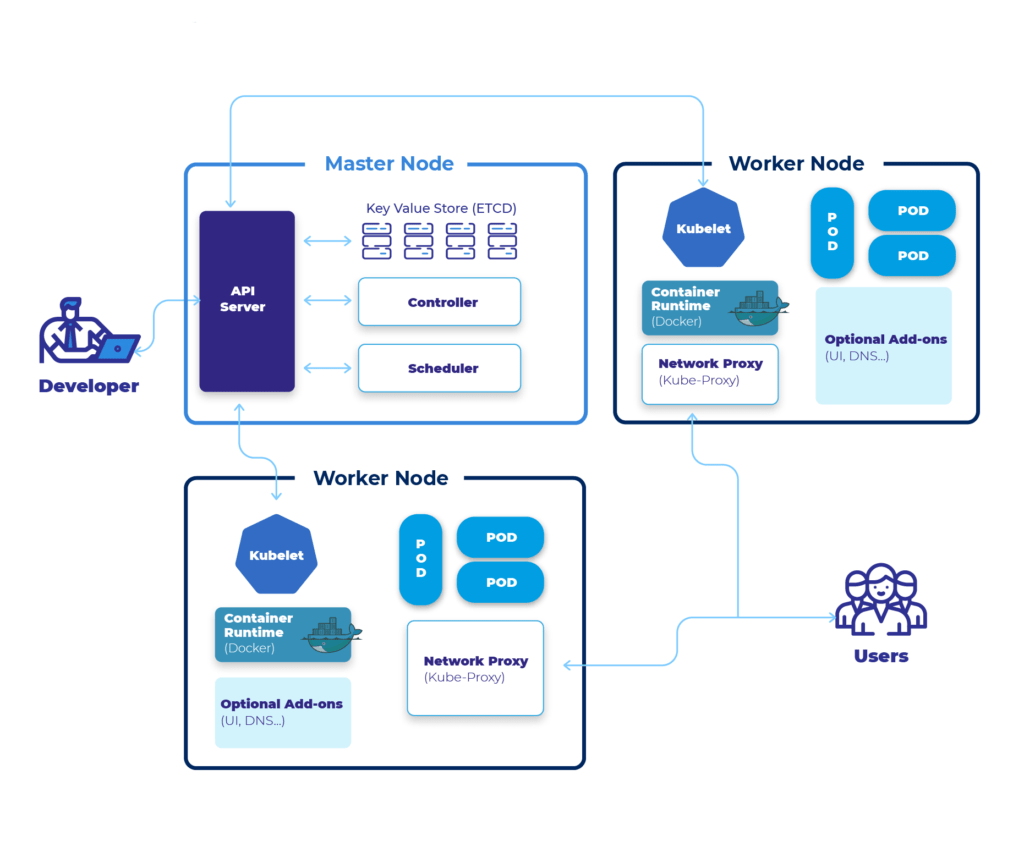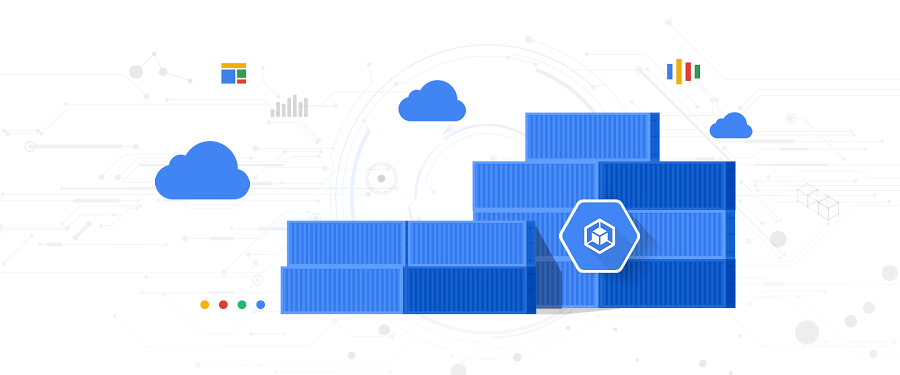In recent years, the use of containers has become increasingly popular as a way to package and deploy applications. Containers offer many benefits over traditional virtualization, such as increased efficiency and portability. However, managing and scaling a large number of containers can be a complex and time-consuming task. This is where Kubernetes comes in.
Kubernetes is a container orchestration system that automates the management and scaling of containers. It allows for the creation and management of multiple environments, such as development, testing, and production, making it an essential tool for modern cloud infrastructure. It also provides an API that can be used to automate the deployment, scaling, and management of containerized applications and services.
The popularity of Kubernetes is increasing rapidly, as businesses and organizations are recognizing the benefits and advantages of using it for their cloud deployments. Its ability to enable flexible and scalable deployments, as well as its ability to manage and automate the deployment of containerized applications and services, make it an essential tool for modern cloud infrastructure.
In this article, we will discuss the basics of Kubernetes, its role in cloud deployments, and why it is becoming increasingly popular among businesses and organizations. We will also explore the benefits and advantages of using Kubernetes for cloud deployments and discuss its future potential for further innovation.
Read also: Kubernetes 101: An Introduction To Container Orchestration
What is Kubernetes?
Kubernetes, also known as K8s, is an open-source container orchestration system that automates the management and scaling of containerized applications and services. It was developed by Google and is now maintained by the Cloud Native Computing Foundation (CNCF).
Kubernetes uses a cluster of machines, also known as a “cluster,” to manage and scale containerized applications and services. Each machine in the cluster is called a “node” and runs a container runtime, such as Docker, to run the containerized applications and services.
Kubernetes is composed of several basic components, including:
– Pods: The smallest and simplest unit in the Kubernetes object model, a pod represents a single process or container.
– Services: An abstraction that defines a logical set of pods and a policy by which to access them.
– Replication Controllers: Responsible for ensuring that a specified number of replicas of a pod are running at any given time.
– Labels: Used to organize and select subsets of objects.
– Volumes: Used to provide storage for pods.
These components work together to create a powerful system that can manage and scale containerized applications and services. Kubernetes also provides an API that can be used to automate the deployment, scaling, and management of containerized applications and services.
Kubernetes has a wide range of use cases, from small, single-node clusters to large, multi-node clusters that can manage thousands of containers. It is widely used in cloud environments, on-premises data centers, and hybrid environments. It also supports various cloud providers and on-premises solutions.
In summary, Kubernetes is an open-source container orchestration system that automates the management and scaling of containerized applications and services. It provides a powerful set of tools and an API that can be used to automate the deployment, scaling, and management of containerized applications and services, making it an essential tool for modern cloud infrastructure.
Flexibility and Scalability
One of the key benefits of using Kubernetes for cloud deployments is its ability to enable flexibility and scalability. Kubernetes provides several features that allow for the dynamic management of resources and the automatic scaling of containerized applications and services.
One of the key features of Kubernetes is its ability to automatically scale the number of replicas of a pod, based on the resource usage of the application. This allows for the efficient use of resources and the ability to handle fluctuations in demand. For example, if the application is experiencing a high load, Kubernetes can automatically scale up the number of replicas to handle the increased demand.
Kubernetes also allows for the creation and management of multiple environments, such as development, testing, and production. This allows for the easy management of different versions of an application and the ability to roll out updates and new features in a controlled manner.
Another benefit of Kubernetes is its ability to support multiple cloud providers and on-premises solutions, allowing for the deployment of applications in a variety of environments. This allows for the flexibility to choose the best environment for a particular application and the ability to easily move applications between environments.
In summary, Kubernetes enables flexible and scalable cloud deployments by providing features such as automatic scaling, the ability to manage multiple environments, and support for multiple cloud providers and on-premises solutions. These features make it an essential tool for modern cloud infrastructure, allowing for the efficient use of resources and the ability to handle fluctuations in demand.
Kubernetes in Practice
Kubernetes is being widely adopted by businesses and organizations of all sizes, across a wide range of industries. Some examples of how Kubernetes is being used in practice include:
- Managing and scaling microservices-based applications: Kubernetes provides a powerful set of tools for managing and scaling complex, microservices-based applications. This allows for the efficient use of resources and the ability to handle fluctuations in demand.
- Deploying machine learning models: Kubernetes can be used to deploy and manage machine learning models, making it easier to scale and update models as needed.
- Automating the deployment of containerized applications and services: Kubernetes provides an API that can be used to automate the deployment, scaling, and management of containerized applications and services. This allows for the efficient use of resources and the ability to handle fluctuations in demand.
- Managing and scaling data-intensive applications: Kubernetes can be used to manage and scale data-intensive applications, such as databases, data lakes, and data warehouses.
These examples illustrate the wide range of use cases for Kubernetes and its ability to enable flexible and scalable cloud deployments. As businesses and organizations continue to adopt Kubernetes, it is likely that more and more use cases will be discovered, further demonstrating its potential and capabilities.
Conclusion
In conclusion, Kubernetes is being widely adopted by businesses and organizations for its ability to enable flexible and scalable cloud deployments. Its ability to manage and scale containerized applications and services, as well as its support for multiple cloud providers and on-premises solutions, make it an essential tool for modern cloud infrastructure.
The popularity of Kubernetes is increasing rapidly, as businesses and organizations are recognizing the benefits and advantages of using it for their cloud deployments. Its ability to enable flexible and scalable deployments, as well as its ability to manage and automate the deployment of containerized applications and services, make it an essential tool for modern cloud infrastructure.
The future of Kubernetes is bright, as more and more businesses and organizations are discovering its potential and capabilities. As the use of containers and microservices continues to grow, it is likely that Kubernetes will continue to play a major role in the management and scaling of these technologies.
We encourage readers to explore Kubernetes and its capabilities for their own cloud deployments. With its ability to enable flexible and scalable cloud deployments, it can help organizations to improve their infrastructure, increase efficiency and reduce costs.






